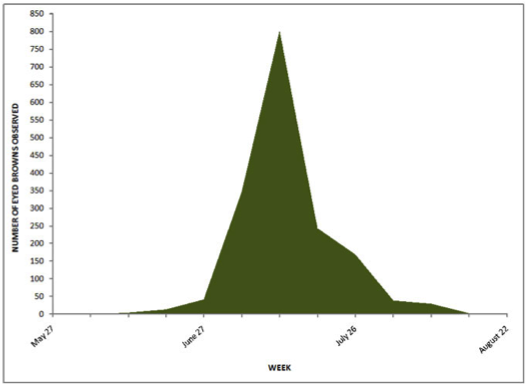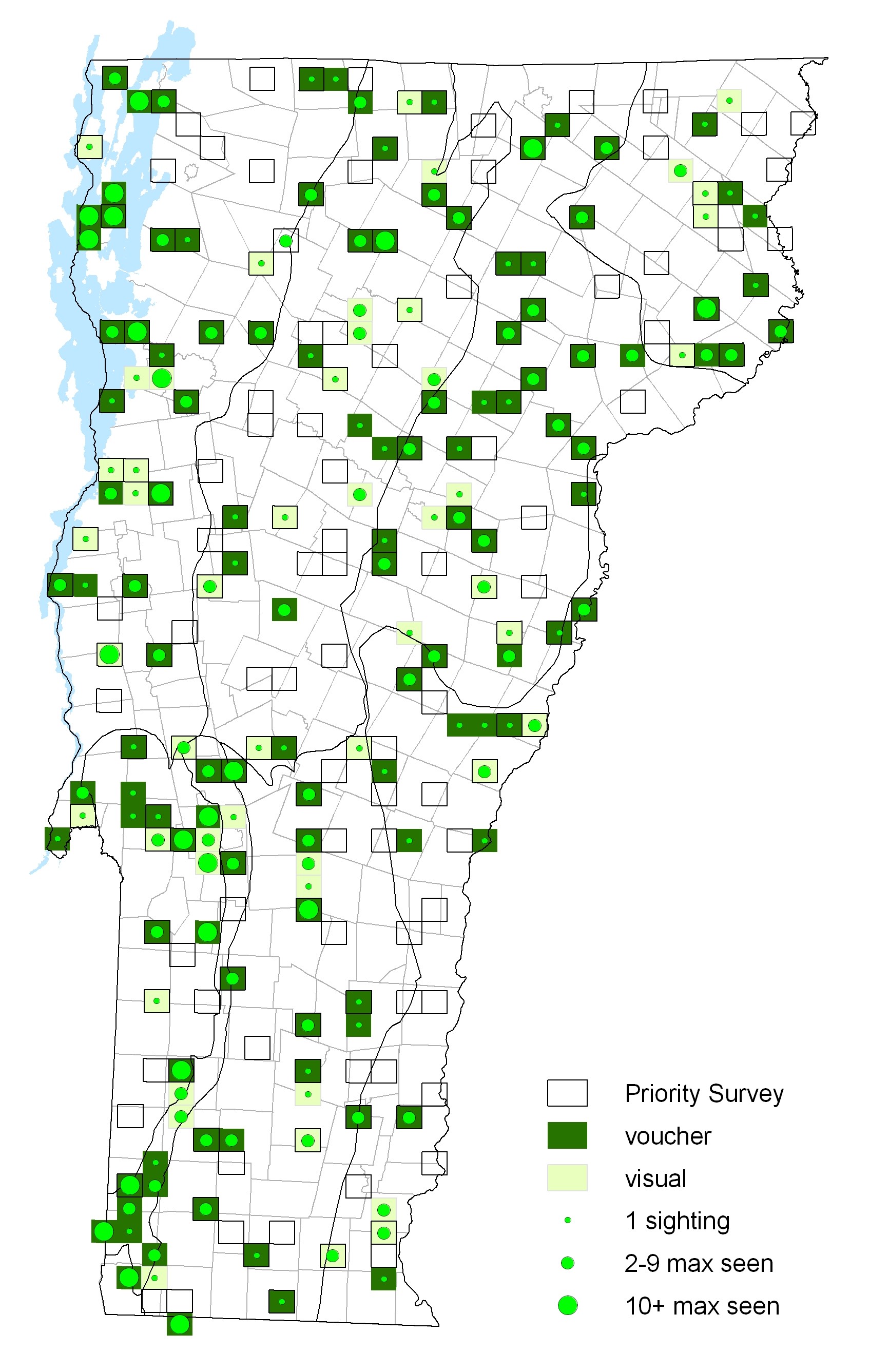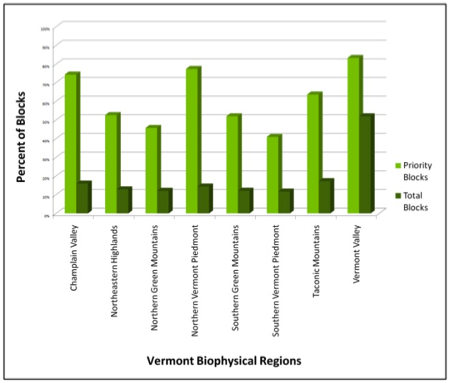|
Resident Conservation Status North American Range |
Males fly weakly over and within low plant growth while patrolling for females and occasionally perch to court them. Eggs are scattered on many different plants. Larvae overwinter in third and fourth instars. Pupate in spring and emerge in June.
Identification
Upperside is light to medium brown with black eyespots. Underside of forewing has submarginal eyespots about the same size, usually touching or linked like a chain; dark line inside the hindwing’s spot row is zigzagged.
Flight
The Eyed Brown has one brood and can be seen on the wing from late May until the end of August. This butterfly can be locally common and is found in the greatest abundance from the end of June through the end of July. Extreme dates: 27 May 2005 in Grand Isle (D. Hoag) and 22 August 2003 in Shaftsbury (T. Armata).
Distribution and Habitat
Found throughout Vermont during VBS in open sedge meadows, freshwater marshes, and open areas along slow-moving streams. Larval hostplants are in the sedge family, including Tussock Sedge (Carex stricta) and Brome-like Sedge (Carex bromoides).







